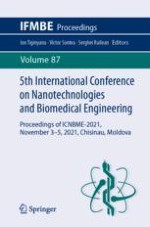This book gathers the proceedings of the 5th International Conference on Nanotechnologies and Biomedical Engineering, held online on November 3–5, 2021, from Chisinau, Republic of Moldova. It covers fundamental and applied research at the interface between nanotechnologies and biomedical engineering. Chapters report on cutting-edge bio-micro/nanotechnologies, devices for biomedical applications, and advances in bio-imaging and biomedical signal processing, innovative nano-biomaterials as well as advances in e-health, medical robotics, and related topics. With a good balance of theory and practice, the book offers a timely snapshot of multidisciplinary research at the interface between physics, chemistry, biomedicine, materials science, and engineering.
